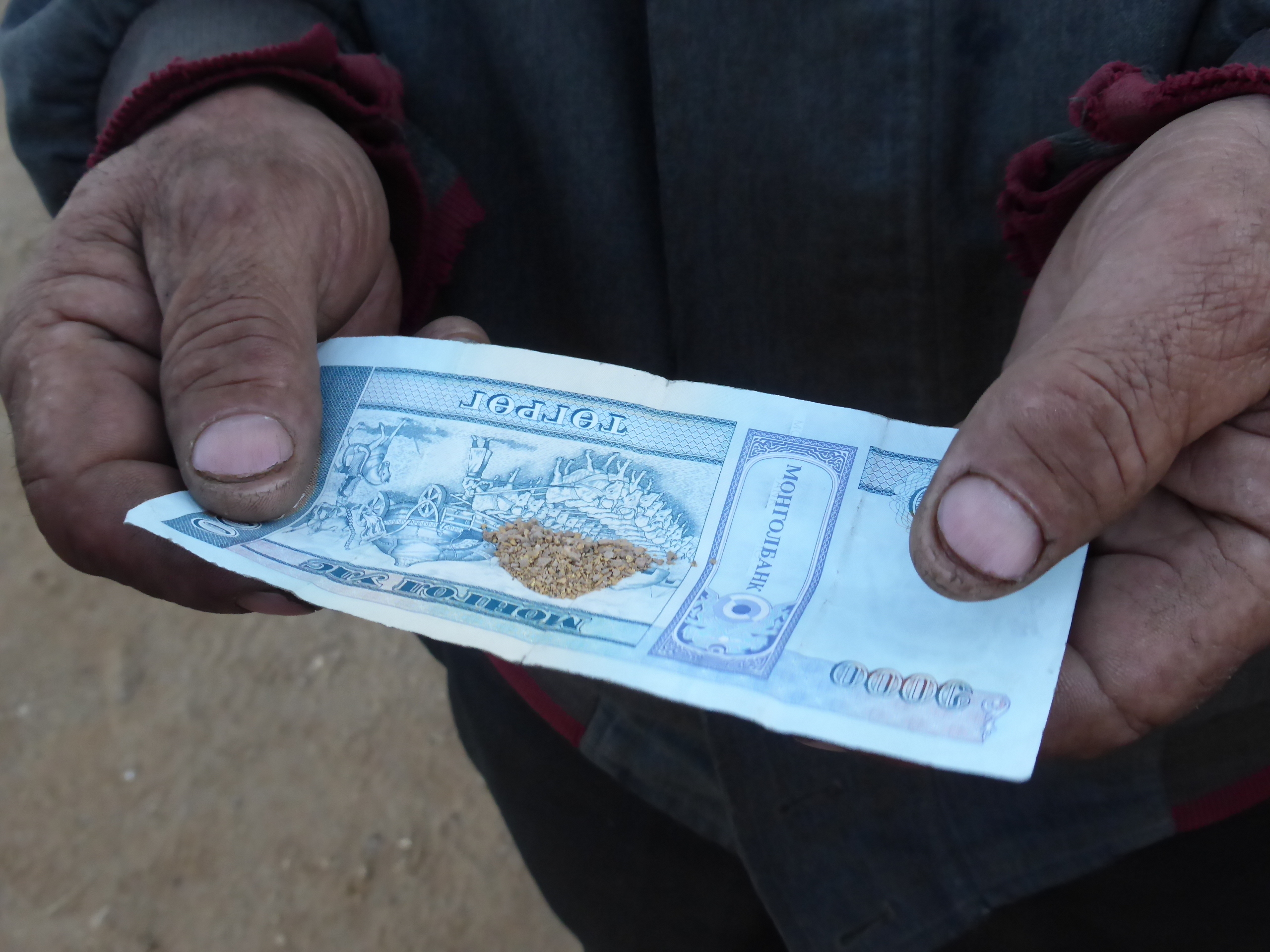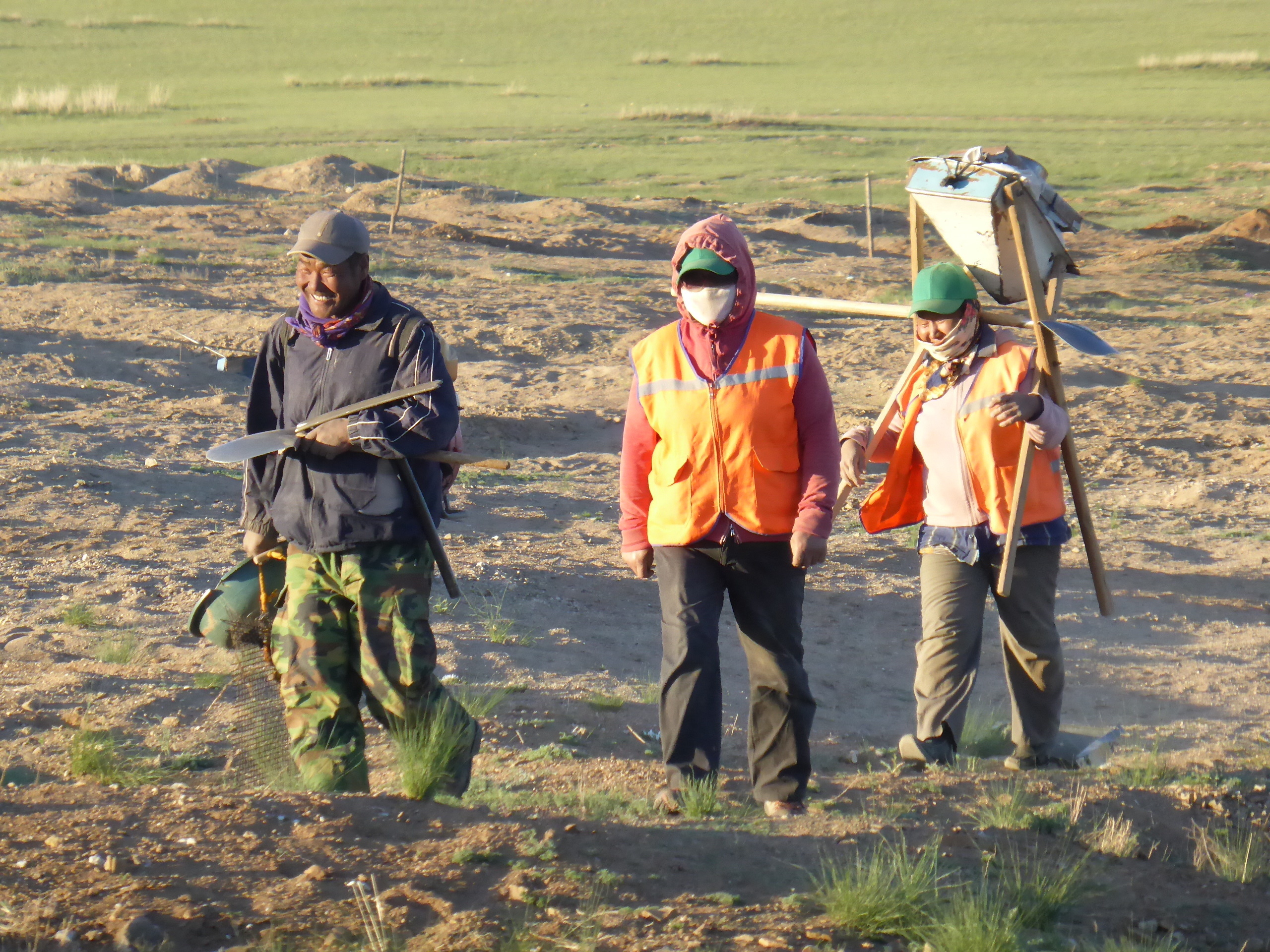Two years ago, we sat with artisanal gold miners in a ger at Bayankhongor, Mongolia, learning about their work. One of the miners, Mr. Byambadorj, stood up to say something we don’t often hear:
“It’s been only five years since we organised into partnerships. Before, I was a wild person, with a mask and hat and I could raid an area to dig and live. All operations were disorganised and done wildly; we had a very big problem with the local government. Now we talk freely with the local government and we have an agreement with the mining company and government, which is a very big success, … this is a change that we experience in our everyday life.” [1]
The transformations of Mr. Byambadorj and his colleagues into respected entrepreneurs are astounding. All the more so when we consider how often artisanal and small-scale mining (ASM) is subtlety (or explicitly) portrayed as a scourge to be fixed: the broad use of the term ‘illegal mining’; the perception of uniform criminality; the portrayal of miners as greedy, chaotic, and destructive.
The Mongolian miners’ experience provides striking contrast. Not by canonizing or idealising miners or artisanal mining – the sector has its challenges and its complexities – but by humanising them.
Artisanal mining was uniformly illegal in Mongolia since its emergence in the 1990s until 6 years ago. Today, thousands of miners have formalised, including through Asia’s first Fairmined ASM enterprise. Over the last 10 years, the Sustainable Artisanal Mining (SAM) Project, a bilateral cooperation between the Swiss Agency for Development and Cooperation and the Government of Mongolia, has supported the creation of an enabling regulatory and policy environment in which Mongolia’s artisanal miners are able to formalise. More than 7,000 artisanal miners[3] are now operating in the formal sector allowing them to build businesses, support their families, and advocate for and access their rights.
How has Mongolia achieved these successes? One answer is through a Human Rights Based Approach that considers ASM formalisation through the lens of rights and duties.
Rights. We began by acknowledging that ASM is not the ‘chaos’ it is usually perceived to be. There exists functional organisation, order, systems, and relationships amidst even the most informal ASM. The informal market may be black or grey, but it works efficiently – it existentially must. At the same time, although the political economics of the informal sector typically ‘work’, there are often accompanied by grave inequalities, exploitation, and abuse. On a daily basis, the most basic rights of the individuals participating in this sector are systematically being denied.
Duties. We also realised that the State, through government agencies commonly believe that their primary duty is to monitor, control, and close down mines that are not compliant with the law. This is in some cases a reactionary enforcement approach. In other cases it is a legitimate piece of a holistic approach to their mandate, which is simply the easiest to roll out. We turned this on its head, encouraging government actors to consider themselves to be first movers, or enablers. When government agents expect ASM to simply comply with ‘their duty to respect the rule of law’ regardless of whether they have the law, understand the law, or are able to comply with the law, their only tool is to hammer lawbreakers. This proves discouraging at best and futile at worst. ASM can reasonably respect the rule of law when the State first realises its duty to provide an enabling and appropriate framework and helping them do this.
In Mongolia, under the SAM Project, theory and perspective are becoming practice. Government agents are acting on their duty to deliver services to miners and thus enabling miners to understand and claim their rights. These agencies are enabled with the necessary capacity to fulfil this mandate – through resources and training. The motivation is not because governments are somehow expected to do something for ASM because ASM is ‘good’. Rather, it is because government agents are ‘public servants’, expected (and able) to deliver services to the miners as citizens and rights holders.
It’s not enough for government officers to be aware of what they ought to do. The miners have also become aware of what their own rights and duties are, and what they can expect the government to deliver to them. First and foremost, miners need to be empowered and given a voice. In Mongolia, this process began with identifying local champions from civil society or politicians and experts, who helped to advocate for the miners while gradually building the miners’ own capacity to advocate for themselves.
 In doing so, instead of feeling victimised by the government, the miners were recast as ‘rights holders’ who learned how to claim and access their rights from the state. The miners became able to better organise, and were more willing to engage with the government. This enabled structures and relationships of mutual accountability between government agents and miners, as well as other citizens, to be established.
In doing so, instead of feeling victimised by the government, the miners were recast as ‘rights holders’ who learned how to claim and access their rights from the state. The miners became able to better organise, and were more willing to engage with the government. This enabled structures and relationships of mutual accountability between government agents and miners, as well as other citizens, to be established.
Far from being a burden, this process has proved to be empowering – even invigorating – for government agents. When given a mandate to be a public servant, to move from watchdog to duty bearer and enabler, people rise to the occasion.
The applications of the HRBA stretch far beyond Mongolia. A colleague of ours recently put this into practice in his work in the Great Lakes region. He described his experience thus:
“Right after [the SAM planning exercise in Mongolia] I had an evaluation with a state inspection agency. A completely different topic in principle and approach, but at the closing workshop I tested the Human Rights Based Approach and started to talk to inspectors about not their role in inspecting, but their role to ensure their country complies with its HR obligations. Suddenly their eyes started to open, they started to smile, they started to understand that their work has a deeper meaning. They started to become proud of what they are doing. It was a short half hour exercise but what I learned from that is to trust a strategy that empowers government agents to be duty bearers. It is a strategy for how we can create pride in duty bearers that they’re not just ‘doing their job’, but contributing to a wider objective of enhancing and improving their nation’s international standing.”
The process Mongolia is going through is neither easy nor simple. It demands patience, resolve, funding, a multi-stakeholder approach, and a facilitating actor that is seen as neutral and equidistant between all interests. But formalisation is the starting point to engage with ASM on a range of social, developmental, and environmental challenges. Formalisation is also something the sector can demand of their governments so they can grasp their most basic human rights.
Formalisation can feel like the Holy Grail of the ASM sector. It is a core priority of both the Minamata Convention on Mercury (Article 7) and Appendix 1 of the Gold Supplement of the OECD Due Diligence Guidance for Responsible Supply Chains of Minerals from Conflict-Affected and High-Risk Areas. It is the objective of millions of dollars in international aid seeking to bring about everything from good governance to sustainability to economic development in mineral sectors. This is not without reason; failure to formalise is not without consequence. If miners don’t formalise, they can’t professionalise. Without professionalisation, miners are not be able to accommodate the due diligence requirements of ‘responsible’ buyers. This exacerbates buyer disengagement. Our conversations with downstream users of precious minerals suggest avoidance of ASM sourcing is now a central part of many procurement strategies. This is not simply a lost opportunity for downstream buyers; it is a tragedy for miners and their communities who need access to responsible markets more than ever. To quote previous writers on this blog, “Whole-scale disengagement with artisanal miners almost always has harsh consequences for miners’ livelihoods”; they go on: “what’s important is promoting responsible sourcing of minerals from conflict areas, despite the challenges.[4]”
There is much to learn from Mongolia’s experience, and especially the SAM project’s use of the Human Rights Based Approach. If we start to use this approach in other contexts, we may at last see a step-change in efforts to bring artisanal miners into greater formality, which would not only help unleash the developmental opportunity of ASM, but also address risks across their supply chains.
Patience Singo is the Project Director Sustainable Artisanal Mining (SAM) Project of the Swiss Agency for Development and Cooperation (SDC). Estelle Levin-Nally is the Founder and Director of Levin Sources
This blog was first published on the OECD Insights Blog, here: http://oecdinsights.org/2016/03/16/mongolias-artisanal-miners/
[1] Estelle Levin-Nally. 2014.
[2] An estimated 7,000 are working in over 53 formalised ASM entities (Singo, Patience 2015. “SAM Annual Report”)
[3] This accounts for about 11% of Mongolian artisanal and small-scale miners. Up scaling of formalisation still has a long road ahead.
[4]Gillard, Tyler and Nieuwenkamp, Roel. 2015. “Responsible gold also means supporting livelihoods of artisanal miners. OECD Insights Blog. http://oecdinsights.org/2015/03/24/responsible-gold-also-means-supporting-livelihoods-of-artisanal-miners/ [accessed 16 March 2016]






